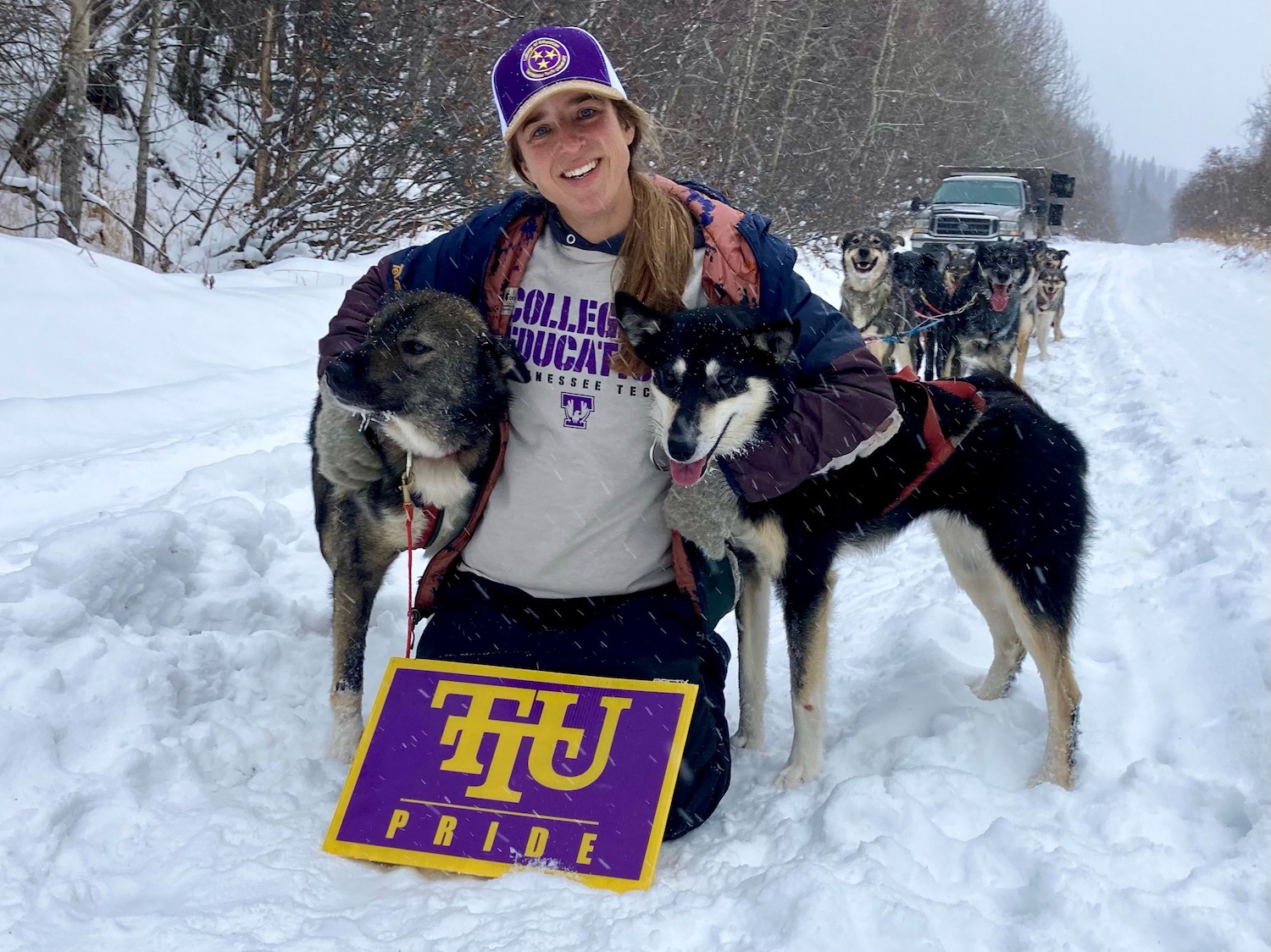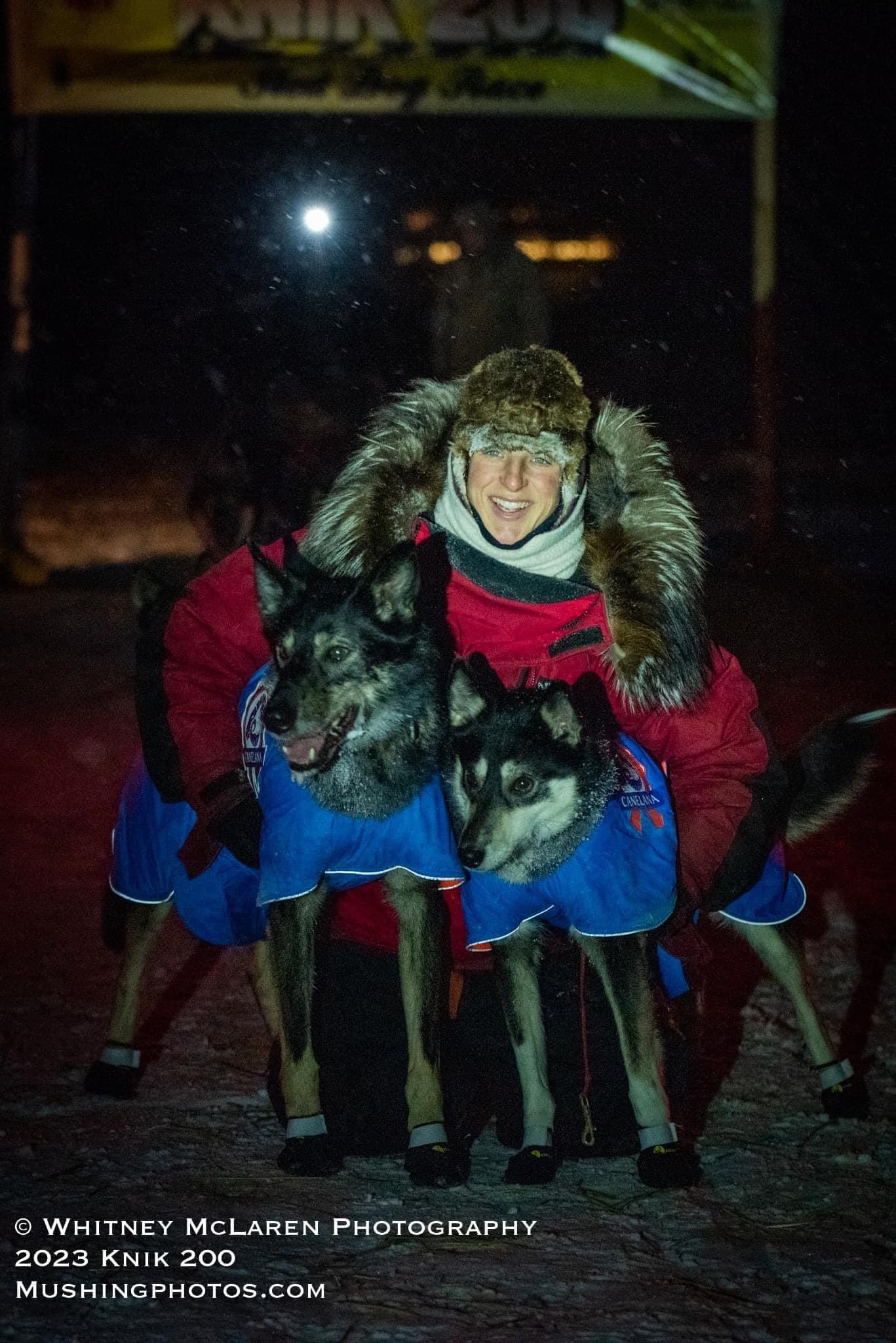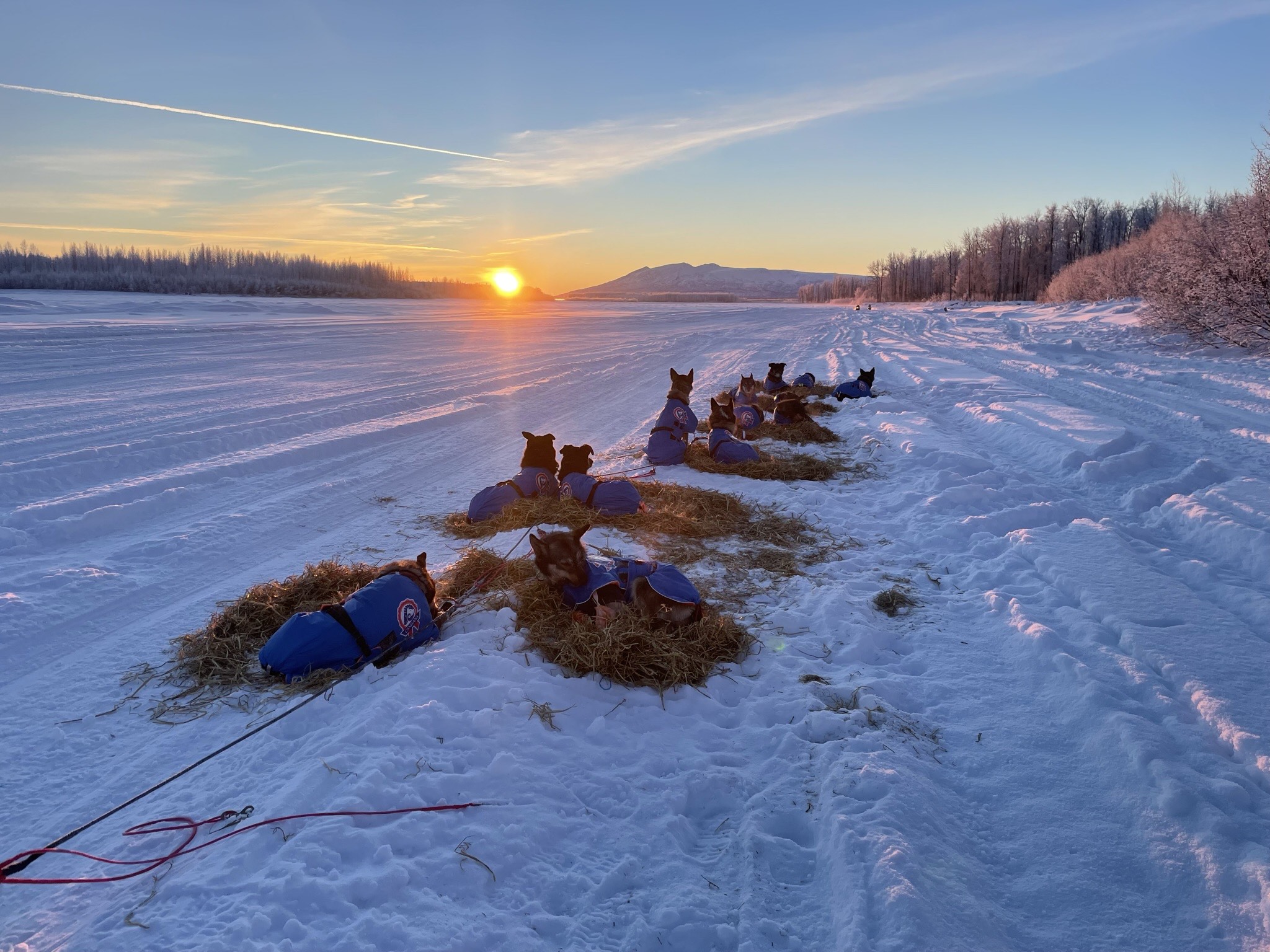Tech alumna to compete in 2023 Iditarod dog race

Tech alumna Jennifer LaBar pictured with her dogs.
On March 4, Tennessee Tech University alumna Jennifer LaBar will be sitting at the
starting line in Anchorage, Alaska, with 14 of her dogs. She and her Alaskan Husky
mixes will be setting out for Nome, Alaska, roughly 1,000 miles away in what is known
as the “Last Great Race” – the Iditarod.
“Dog mushing has been a part of Alaska’s history way before it was a state,” LaBar
said. “Unfortunately, this year has the lowest number of mushers they’ve had in the
history of the race. There’s quite a few of the racers who are retiring and there’s
just not as many young people getting into the sport. A lot of that boils down to
expenses. Everything is so expensive, from the gear to the dog food, but hopefully
some younger people can find a way to still make it happen.”
LaBar herself had no aspirations of becoming a dog musher when she first graduated
from Tech in 2005 with a degree in secondary education. She married her husband, Andrew,
who is also a Tech graduate with a degree in industrial technology, and they both
moved to Arkansas for his one-year internship. After that was up, the pair started
considering where they wanted to head next. One of the places they decided to visit
was Alaska.
“Both of us were drawn to Alaska for a couple of different reasons,” LaBar said. “My
dad, who passed away when I was 21, had spent a summer in Alaska during college working
at a salmon cannery and described it as one of the best summers of his life. Then,
my husband’s grandfather had worked on the Alaska Highway back in World War II or
just before.”
Once there, LaBar and her husband both fell in love with the state. After heading
off on some other adventures – including hiking the Appalachian Trail – they eventually
decided to settle down in Alaska in 2011. LaBar got a job with a dog musher who regularly
ran 1,000 mile-races. She helped him train his dogs in between those races by running
them with four-wheelers when snow was low and then with dog sleds when weather permitted.
“It’s kind of like the training that human marathon athletes do,” explained LaBar. “You start with small miles, so around September we start with three- to five-mile
runs. Every time you run those same miles three or four times you bump up more distance.
I run my dogs five days a week. So, we’ll usually do three days on, then have a day
off, then two days on and have a day off. It’s to keep them in shape and build muscle.”
“You start with small miles, so around September we start with three- to five-mile
runs. Every time you run those same miles three or four times you bump up more distance.
I run my dogs five days a week. So, we’ll usually do three days on, then have a day
off, then two days on and have a day off. It’s to keep them in shape and build muscle.”
It didn’t take long after taking that job with a dog musher that LaBar dreamed of
becoming a musher herself. Seeing her growing love of the sport, her husband encouraged
her to follow her passion. They started with five dogs, which soon grew to double
that number by the end of their first year. Now, the couple owns 20 racing dogs and
runs Rockin’ Ridge Kennel in Healy, Alaska, which also offers trips with the sled
dogs to the public.
“My husband has always been very supportive of me pursuing the sport, even though
he knew that it was going to be expensive and time consuming. I don't think he really
realized just how time consuming and how expensive it was going to be,” she laughed.
This March will be LaBar’s first time running the Iditarod, though she has competed
in plenty of races with less mileage. When she and 14 of her most athletic dogs take
off into the Alaskan wilderness, they will be following trail markers along a race
route that takes an average of 10 days to complete.
Along the trail for the Iditarod, checkpoints have been set up for the racers who,
after a mandatory check-in, can choose to stay and rest, or choose to continue on.
Each stop is spaced at varying distances from the next, so a musher has to consider
how far away the next check point is when deciding whether to stay or go. Each stop
also has veterinarians to inspect the dogs and make sure they are fit to continue
running. “At least every 50 or 100 miles, you can pick up more supplies, like more food for
the dogs and fuel to melt snow to make water, extra booties, batteries – whatever
you need,” LaBar said. “Some of these checkpoints might have hot water available for
the dogs, which speeds up all your chores, so that's nice. And they have they might
have places for you to go inside and get warm and dry out your gear and take a nap.”
“At least every 50 or 100 miles, you can pick up more supplies, like more food for
the dogs and fuel to melt snow to make water, extra booties, batteries – whatever
you need,” LaBar said. “Some of these checkpoints might have hot water available for
the dogs, which speeds up all your chores, so that's nice. And they have they might
have places for you to go inside and get warm and dry out your gear and take a nap.”
LaBar will be able to see how she is doing on the leaderboards during each check-in,
and also can call her husband when she has cell service and ask him where she is in
the running.
“But really, knowing where you are doesn't really change much,” she said. “You can
only do what your dogs are trained for. With these 1,000-mile races they say you really
don't even start actually racing until like the last few 100 miles.”
Those wanting to keep up with LaBar’s progress in the Iditarod can keep an eye on
the official Iditarod website at https://iditarod.com or join her private Facebook group “Team LaBar – Iditarod 2023.”
“I never even knew about dog sledding until 2007, when we came up here for the very
first time,” LaBar said. “I've always loved dogs and I love the outdoors and long-distance
traveling. This is like the best of all those worlds combined.”

